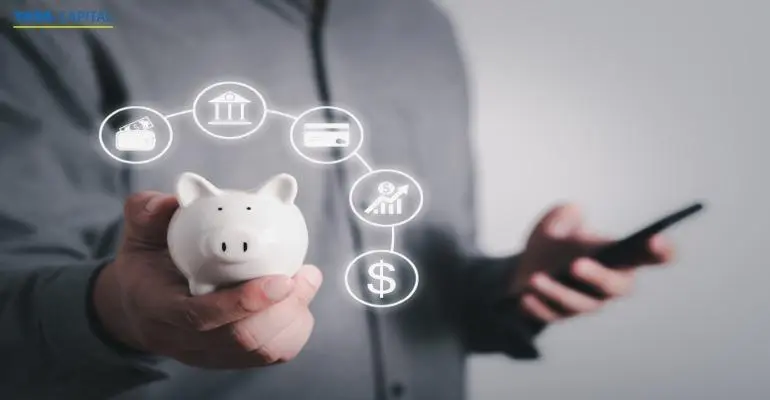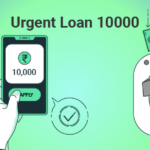What is a Fast Loan App?
A fast cash app is a mobile application that allows users to quickly access small, short-term loans directly from their smartphones. These apps provide a convenient and streamlined process for borrowing money, often with minimal documentation required and fast approval times.
The key features of fast loan apps include:
- Instant Access: Users can apply for loans and receive funds within minutes or hours, making these apps ideal for emergency situations or unexpected expenses.
- Minimal Requirements: Fast loan apps typically have less stringent eligibility criteria compared to traditional lenders. They may only require basic information like employment status, income, and bank account details.
- Small Loan Amounts: These apps typically offer loans ranging from a few hundred to a few thousand dollars, designed to cover short-term financial needs rather than larger investments or purchases.
- Short Repayment Periods: Fast loans are meant to be repaid within a few weeks or months, with the repayment schedule often aligned with the borrower’s pay cycle.
- Convenient Repayment: Repayments are typically automated through deductions from the borrower’s linked bank account or debit card, eliminating the need for manual payments.
- High Interest Rates: Due to the convenience and speed of these loans, fast loan apps often charge higher interest rates and fees compared to traditional lenders.
Fast loan apps operate by connecting borrowers with lenders or lending platforms through their mobile applications. The entire process, from application to approval and disbursement, is conducted digitally, making it a seamless and accessible experience for users seeking quick financial solutions.
Table of Contents
Rise of Fast Loan Apps
The fast loan app industry has witnessed explosive growth in recent years, fueled by the increasing demand for quick and convenient access to credit. Several factors have contributed to this surge:
- Smartphone Penetration: The widespread adoption of smartphones and mobile internet has paved the way for the proliferation of fast loan apps. With a few taps on their mobile devices, consumers can now apply for and receive loans within minutes, eliminating the need for physical visits to traditional lending institutions.
- Changing Consumer Preferences: Modern consumers value speed, convenience, and seamless digital experiences. Fast loan apps cater to these preferences by offering a streamlined application process, instantaneous approval decisions, and swift fund disbursement.
- Financial Inclusion: A significant portion of the population remains underserved or unbanked by traditional financial institutions. Fast loan apps have stepped in to bridge this gap, providing access to credit for individuals who may have been previously excluded due to stringent requirements or lack of credit history.
- Economic Challenges: In times of economic uncertainty or financial emergencies, the demand for quick access to funds increases. Fast loan apps have capitalized on this need, positioning themselves as a viable solution for short-term liquidity requirements.
The market size of the fast loan app industry is staggering, with estimates suggesting that it will reach billions of dollars in the coming years. User statistics paint a compelling picture of the industry’s growth trajectory, with millions of downloads and active users across various platforms and regions.
While the convenience and accessibility of fast loan apps have undoubtedly contributed to their popularity, it is crucial to approach these services with caution and responsible borrowing practices to mitigate potential risks and ensure financial stability.
How Fast Loan Apps Work
Fast loan apps have streamlined the lending process, making it quick and convenient for borrowers to access funds. Here’s a step-by-step look at how these apps typically work:
- Registration and Account Creation: To get started, you’ll need to download the app and create an account by providing basic personal and contact information.
- Loan Application: Once registered, you can initiate a loan application by specifying the desired loan amount and repayment tenure. The app will prompt you to provide additional details, such as employment status, income sources, and purpose of the loan.
- Eligibility Check: The app will perform an instant eligibility check based on the information provided. This may involve a soft credit check and verification of your income and employment details.
- Document Upload: If deemed eligible, you’ll be asked to upload supporting documents like identity proof, address proof, bank statements, and income documents. Some apps may allow you to submit these documents later in the process.
- Loan Approval: Once your documents are verified, the app will approve or reject your loan application. Approval decisions are typically made within minutes or a few hours, thanks to the use of automated algorithms and data analytics.
- Loan Disbursal: If approved, the loan amount will be disbursed directly into your linked bank account, usually within 24-48 hours.
- Repayment: You’ll need to repay the loan, along with interest and fees, as per the agreed repayment schedule. Most apps offer flexible repayment options, such as weekly, bi-weekly, or monthly installments, which can be set up for automatic deduction from your account.
Eligibility criteria for fast loans may vary across apps but generally include factors like age (typically 21-60 years), steady income source, good credit history, and a valid bank account. Documentation requirements often include government-issued ID, address proof, income proof, and bank statements for the last few months.
Advantages of Fast Loan Apps
Convenience: Fast loan apps offer unparalleled convenience by allowing borrowers to apply for and receive loans entirely through their mobile devices. With just a few taps on their smartphones, users can initiate the loan process from anywhere, eliminating the need for physical visits to a bank or lender’s office.
Speed: As the name suggests, one of the primary advantages of fast loan apps is their ability to provide funds rapidly. Many apps claim to disburse loans within minutes or hours after approval, ensuring that borrowers can access cash almost instantly to address their immediate financial needs.
Accessibility: Traditional lending institutions often have stringent eligibility criteria, making it challenging for individuals with poor credit scores or irregular incomes to secure loans. Fast loan apps have opened up access to credit for a broader range of borrowers, including those who may have been previously excluded from mainstream lending options.
Flexibility: Fast loan apps typically offer small-dollar loans with short repayment periods, providing borrowers with flexibility in managing their finances. This flexibility allows users to borrow only what they need and repay the loan quickly, minimizing the overall interest costs.
Digital Experience: Fast loan apps leverage cutting-edge technology to create a seamless digital experience for borrowers. From the application process to loan management and repayment, everything can be handled through the app’s user-friendly interface, eliminating the need for paperwork and streamlining the entire lending process.
Risks and Downsides
Fast loan apps offer quick access to cash, but they come with significant risks and downsides that borrowers should be aware of. One of the primary concerns is the exorbitantly high interest rates charged by these apps, which can trap borrowers in a cycle of debt. Annual percentage rates (APRs) can soar well into the triple digits, making it challenging to repay the loan and accrued interest on time.
Another risk associated with fast loan apps is the potential for debt traps. Many borrowers find themselves taking out new loans to pay off existing ones, leading to a never-ending spiral of debt. This cycle can have severe consequences, including damage to credit scores, increased financial stress, and potential legal issues.
Furthermore, the fast loan industry operates in a largely unregulated space, leaving borrowers vulnerable to predatory lending practices and lack of consumer protection. Some apps may engage in deceptive marketing tactics, hide crucial information in fine print, or employ aggressive debt collection methods.
Data privacy is another area of concern. Fast loan apps often require access to sensitive information, such as contact lists, location data, and SMS permissions. There have been instances where borrowers’ personal data has been mishandled, sold to third parties, or used for unauthorized purposes, compromising their privacy and security.
Borrowers should exercise caution when considering fast loan apps and carefully weigh the potential risks against their immediate financial needs. Seeking alternative sources of credit, creating a budget, or exploring debt counseling services may be more prudent options in the long run.
Responsible Borrowing Tips
Responsible borrowing is crucial when using fast loan apps to avoid falling into a debt trap. Here are some essential tips to keep in mind:
Evaluate Your Need: Before taking out a fast loan, carefully evaluate whether the expense is truly necessary or if it can be postponed or avoided. Fast loans should only be used for emergencies or unavoidable expenses, not for discretionary spending.
Compare Options: Explore various fast loan apps and compare their interest rates, fees, and repayment terms. Some apps may offer more favorable conditions than others, so it’s essential to shop around and find the best deal.
Read the Terms and Conditions: Thoroughly read and understand the terms and conditions of the loan agreement before accepting it. Pay close attention to the interest rates, fees, late payment penalties, and any other clauses that could impact your ability to repay the loan.
Plan for Repayment: Before taking out a fast loan, ensure that you have a solid plan for repayment. Consider your income, expenses, and other financial obligations to determine a realistic repayment schedule. Failing to repay the loan on time can result in additional fees and damage to your credit score.
Remember, fast loan apps should be used responsibly and only when absolutely necessary. Seek alternative solutions or financial counseling if you find yourself relying too heavily on these loans.
Top Fast Loan Apps
The fast loan app market has seen a surge in recent years, with several players emerging to cater to the growing demand for quick and convenient access to credit. Here’s an overview of some of the top fast loan apps:
Earnin
Earnin is a popular app that allows users to access a portion of their earned wages before payday. It doesn’t charge interest or fees but encourages users to leave a “tip” for the service. Earnin has a rating of 4.6 on the App Store and 4.3 on Google Play, with users praising its ease of use and quick access to funds.
Dave
Dave is another well-known fast loan app that offers small, interest-free cash advances up to $200. It charges a monthly subscription fee of $1 and has additional features like budgeting tools and overdraft protection. Dave has a rating of 4.7 on the App Store and 4.4 on Google Play, with users appreciating its transparent fees and helpful financial management features.
Brigit
Brigit is a fast loan app that offers interest-free cash advances up to $250, along with tools for budgeting and credit monitoring. It charges a monthly subscription fee of $9.99 and has a rating of 4.7 on the App Store and 4.2 on Google Play. Users praise Brigit’s user-friendly interface and helpful financial insights.
MoneyLion
MoneyLion is a comprehensive financial app that offers fast loans, investment accounts, and credit monitoring services. Its fast loan feature, called InstaCash, allows users to borrow up to $300 with no interest or fees. MoneyLion has a rating of 4.7 on the App Store and 4.4 on Google Play, with users appreciating its versatility and ease of use.
Possible Finance
Possible Finance is a fast loan app that offers short-term loans ranging from $50 to $500, with interest rates varying based on the borrower’s creditworthiness. It has a rating of 4.6 on the App Store and 4.2 on Google Play, with users highlighting its transparent pricing and quick access to funds.
These fast loan apps have gained popularity for their convenience and accessibility, but it’s essential to use them responsibly and carefully review their terms and conditions before borrowing.
Regulatory Landscape
The rapid growth of fast loan apps has caught the attention of regulators and consumer protection agencies. While these apps offer convenient access to credit, concerns have been raised about predatory lending practices, excessive interest rates, and the potential for debt traps.
Governments and financial authorities around the world are taking steps to regulate the fast loan industry. In many jurisdictions, laws have been enacted to cap interest rates, mandate transparency in loan terms, and establish cooling-off periods for borrowers. Additionally, measures have been implemented to ensure responsible lending practices, such as verifying a borrower’s ability to repay and providing financial education resources.
Consumer protection organizations have also played a crucial role in advocating for stronger regulations and raising awareness about the risks associated with fast loans. They have pushed for stricter oversight, clearer disclosure requirements, and better complaint resolution mechanisms.
Despite these efforts, the regulatory landscape remains fragmented, with varying degrees of regulation across different countries and regions. Some jurisdictions have taken a more lenient approach, while others have imposed stringent rules or outright bans on certain fast loan practices.
As the industry continues to evolve, regulators face the challenge of striking a balance between promoting innovation and financial inclusion while safeguarding consumer interests. Ongoing monitoring, collaboration between stakeholders, and continuous refinement of regulations will be essential to ensure a fair and responsible fast loan ecosystem.
Alternatives to Fast Loans
While fast loan apps offer a convenient solution for quick cash needs, they may not always be the most cost-effective or sustainable option. It’s important to explore alternative financing options that could better align with your financial situation and long-term goals. Here are some alternatives to consider:
Credit Cards: If you have a good credit score, using a credit card with a low-interest rate or a 0% introductory APR period can be a more affordable way to borrow money. However, it’s crucial to have a plan for repaying the balance before the introductory period ends or interest charges kick in.
Personal Loans from Banks or Credit Unions: Traditional financial institutions, such as banks and credit unions, offer personal loans with potentially lower interest rates and more favorable terms than fast loan apps. These loans typically require a credit check and may have stricter eligibility criteria, but they can be a more cost-effective option for larger loan amounts or longer repayment periods.
Borrowing from Friends or Family: While it may be uncomfortable, borrowing from trusted friends or family members can be an interest-free option. However, it’s essential to approach this with caution, as financial matters can strain personal relationships. It’s advisable to have a clear repayment plan and communicate openly to avoid misunderstandings.
Negotiating with Creditors or Service Providers: If you’re facing financial difficulties, reaching out to creditors, utility companies, or service providers may lead to temporary payment plans, extensions, or reduced fees. Many organizations are willing to work with customers experiencing hardships to avoid default or late payments.
Exploring Assistance Programs: Depending on your circumstances, you may qualify for government assistance programs, nonprofit organizations, or community resources that provide financial aid, debt counseling, or other forms of support.
Remember, while fast loan apps can provide quick relief, it’s crucial to carefully evaluate the long-term implications and explore alternative options that better suit your financial situation and goals.
The Future of Fast Lending
The fast lending industry is rapidly evolving, driven by technological advancements and changing consumer preferences. As we look ahead, several trends and innovations are poised to shape the future of this sector.
Artificial Intelligence and Machine Learning: Fast loan apps are increasingly leveraging AI and machine learning algorithms to streamline the loan application and approval processes. These technologies enable real-time credit risk assessment, automated decision-making, and personalized loan offers tailored to individual borrowers’ profiles.
Alternative Data Sources: Traditional credit scoring models heavily rely on borrowers’ credit histories, which can exclude those with limited or no credit records. Fast lenders are exploring alternative data sources, such as utility bill payments, rent histories, and social media footprints, to assess creditworthiness more comprehensively.
Blockchain and Decentralized Finance (DeFi): The integration of blockchain technology and decentralized finance principles could revolutionize fast lending. Smart contracts and decentralized lending platforms have the potential to eliminate intermediaries, reduce transaction costs, and provide greater transparency and security for borrowers and lenders alike.
Buy Now, Pay Later (BNPL): The BNPL model, which allows consumers to make purchases and pay in installments, has gained significant traction. Fast loan apps may expand their offerings to include BNPL services, catering to the growing demand for flexible financing options, particularly among younger generations.
Embedded Finance: Fast lenders are exploring partnerships with e-commerce platforms, retailers, and other businesses to embed their lending services seamlessly into existing customer experiences. This integration could provide a more convenient and streamlined borrowing process for consumers.
Regulatory Evolution: As the fast lending industry grows, regulatory bodies are likely to introduce new guidelines and oversight mechanisms to protect consumer interests and maintain financial stability. Responsible lenders will need to adapt to these evolving regulations while ensuring transparency and fair lending practices.
The future of fast lending holds both opportunities and challenges. While innovations promise greater accessibility, convenience, and personalization, the industry must prioritize responsible lending practices, data privacy, and consumer protection. The successful integration of emerging technologies and the ability to strike a balance between innovation and responsible lending will shape the future trajectory of this rapidly evolving sector.



